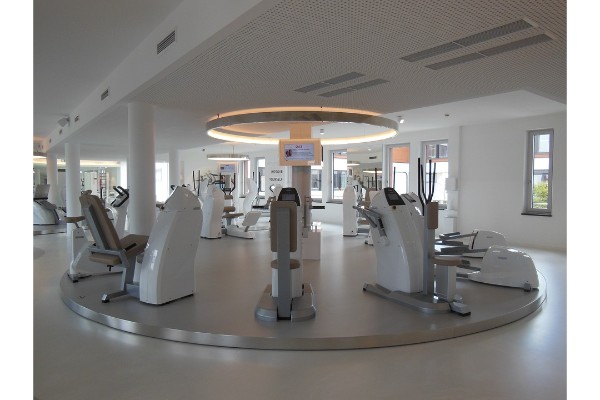The back and forearm muscles are developed by the seated row machine. It is an excellent all-around compound exercise for developing the middle back while offering useful arm work as well.
On a weighted horizontal cable machine with a bench and footplates, the Seated Row Machine exercise is performed. Both a standalone piece of equipment and a multi-gym can contain this. For an upper-body strength workout, seated row machines can be used. For instance, in this series of weight training exercises for beginners, the triceps pushdown, which also uses a cable machine, is followed by the seated row machine.
What Muscles Does The Seated Row Machine Work?
The back muscles that the Seated Row Machine targets. You will either concentrate more on your mid-back (latissimus dorsi) or your upper back (trapezius and rhomboids), depending on the handles being used.
Seated row machines are a good alternative if your gym doesn’t have this machine.
How To Do The Seated Row Machine
Hold the cable attachment while bending your knees and sitting on the bench. It frequently has a triangle handle, but it could also have a bar. Knees should be slightly bent so you can reach out and grab the handle without arching your lower back. You’re ready to row once you’ve braced your abdominals.
- Try not to overuse the row’s momentum by moving the torso backward with the arms as you pull the handle and weight back toward the lower abdomen.
- As you row, squeeze your shoulder blades together while maintaining an outstretched chest. This will focus on the middle to upper back.
- Reverse the handle under tension to full stretch, keeping your back straight even though your hips are flexed. The desired number of repetitions of the exercise should be performed.
Benefits Of The Seated Row Machine
The seated row machine is a pulling exercise that primarily targets the latissimus dorsi, also known as the “lat muscle,” in the back. “lats.” This exercise works the rhomboid muscles that are located between your shoulder blades. When using seated row machines, the trapezius muscles in your upper back, shoulders, and back of your neck are also used. Because the biceps and triceps are the exercise’s dynamic stabilizers, this motion also works the forearm and upper arm muscles. The hamstrings and gluteus maximus are additional stabilizing muscles that are used.
Prevents Back Pain
It may be a good exercise to do to prevent back pain because it strengthens the muscles in the upper back. Exercises that target your posterior chain muscles, which run along the backside of your body, are more effective at treating lower back pain than general exercise.
Develops Strength
Rather than as an aerobic rowing exercise, this exercise is performed to build strength. Despite being called a row, it differs from the standard rowing motion you might perform on an aerobic rowing machine. Given how frequently you pull things toward your chest throughout the day, this exercise is practical.
Prevents Injury
Your shoulders’ stability is aided by strong latissimus dorsi muscles. This may lessen the risk of harm occurring here. People who play sports that require overhead motions, such as basketball, baseball, some track and field events, volleyball, tennis, lacrosse, and others, are more likely to sustain shoulder injuries.
Improves Throwing Ability
Utilizing the Seated Row Machine to strengthen your shoulders will give you more force when throwing things. This is advantageous to those who participate in throwing-based sports, but it can also be advantageous in regular life.
Prepares You For Other Exercises
Maintaining a straight back while working your legs and abs can help avoid strain and injury. You also perform the squat and deadlift exercises with this straight-back, abs-engaged form.
Common Mistakes
To get the most out of this exercise and prevent strain, avoid making these mistakes.
Rounding Your Back
Your back should never be curved; it should always be straight. To enable a full range of motion, you can slightly flex your hip. You can maximize the benefits of this exercise by paying attention to your posture.
Moving Your Torso
During this exercise, shifting your torso relies too heavily on momentum to move the weights. Instead of moving your torso, use your arms to make the motion. During the entire exercise, maintain a still torso.
Returning The Weight Too Fast
The tensioned weight should be brought back to its starting position. Avoid crashing the weights and refrain from pausing or bouncing at the bottom of the lift. By doing this, you’ll make sure your muscles are engaged throughout the entire exercise.
Reduced Range Of Motion
Weight is too heavy if it prevents you from completing the full range of motion with proper form. To get a full range of motion for this exercise, reduce the weight. A good rule of thumb is to start light and concentrate on form, then increase the weight once you are confident that you are performing the exercise properly.
Close Note
If you currently or previously suffered from a shoulder or lower back injury, proceed with caution. You can ask a medical professional if it is recommended. If you experience any severe pain, stop the exercise.
